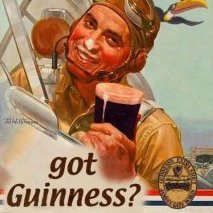Search the Community
Showing results for tags 'stiletto'.
-
Jetmads X-3 Stilleto is plagued with serious 3d print layer lines in areas that are readily visible, disclaimer on the instruction sheet notwithstanding. So I've spent a bunch of time, and money for a solution. This post focuses on parts such as the landing gear doors, the pilot's seat hatch, and the ejection seat itself. I've only begun to remove parts from the print supports so we'll see what the future brings. My theory was that if I could find a UV curing resin that flows easily (not too thick) and self-levels, I could lay that in to fill the lines without ruining the surrounding details and with minimal sanding especially in areas to tight to sand effectively. So here's what I learned: it works. It's fussy and can be hard to get it to work consistently. But you can always wash it off and do over if you don't cure it. I found two resins that work well for this, both made by Solarez. The Fly-Tie Thin Hard formula is clear and fairly thick but it levels nicely. The Ultra Thin Bone Dry Black is thinner and sort of black. I learned that these can be mixed, and can be thinned with lacquer thinner. You need to use plenty of extra cure time if you do. So here we have some results on the landing gear doors and pictures of the pilots hatch and seat Thing is, all of these rivets are just too big. Given that the whole idea was to preserve them, now I'm thinking it'd be easier just to sand them off, deal with the layer lines, and then use resin rivet decals or maybe Anyz 0.35mm resin rivets (these are about 0.4mm). Maybe I'll just take this result and move on because right now my enthusiasm for this kit isn't urging me to go all out on it. It might just need to be a "do a neat job" shelf display item. There is no good excuse for this poor print quality. Jetmad's disclaimer that they are "genuinely unlikely to be notice by the naked eye" is nonsense. What is worse, anyone who mentions this on the Jetmads Facebook page has their comments deleted, and they are banned. I am disappointed with this, to say the least. Although Jetmads clearly puts a lot of care and effort into these kits, the end product quality is not what it ought to be. Banning people who've purchased this kit for expressing reasonable complaints is very bad form, particularly when the Jetmads business model is based on pre-selling unproduced kits sight unseen. How many sales would be lost if people like me saw good photos of the actual product? I've been unable to find a single build or in-progress build of this kit and I wonder why. Disappointment and buyer's remorse come to mind as a possible reasons. Fixing this stuff is a pain in the butt and a waste of time and effort. I wish they had cast more parts and printed fewer because their casting is very good. There are some very nice aspects to this kit to be sure, and I've always wanted an X-3 so here we go. Main landing gear door. Main landing gear door with resin laid on. This is the Hard Black formula. It's actually purple, like Sharpie ink. Nose gear door with resin laid in. This is the Hard Clear formula. After priming with MS1500 from spray can, including the pilot's hatch. Untouched main gear door included for reference. So this worked pretty well. A problem with this method is the meniscus effect, as the liquid resin tends to climb up around the base of whatever raised surfaces it finds, particularly the rivets giving them a soft look and making them look larger than they really are, and they are already much too big. Here is the ejection seat. Those rivets belong to an old steam boiler. References:
-
JETMADS is to release a 1/32nd Douglas X-3 Stiletto resin kit Source: https://www.facebook.com/JETMADS2016/posts/544703189785304 3D renders V.P.
-
Here is the result of my tangle with the AZ Models X-3 Stiletto. I read hsr's thread about his experiences with this very kit and was both inspired and terrified. As expected, there were some terrible fits (canopy, exhaust), but the shape is generally good and there is nice engraved detail. Canopy masks from Peewit fit great. I tried to create a worn version of this aircraft, as it appears in later photos. Tamiya and Alclad paints, and weathered with enamels and oils. A straight pin was substituted for the nose boom because if any of my models is going to impale someone, it's going to be one called Stiletto. Too bad this thing was so damn slow! Thanks for looking!
-
The Douglas X-3 Stiletto was an experimental jet fighter of the 50's. Hold on, did someone say Douglas? Surely Lockheed, with those wings? Nope, it was a Douglas project, but according to its Wilipedia entry, it wasn't very good. Despite having two engines, it wasn't very fast, and it wasn't very stable. The single X-3 built was tested by both US Air force and NASA. However, Lockheed took data from the X-3 tests and lo and behold, a Starfighter was borne with trapezoidal unswept wings of very thin aspect ratio. This is the second Lindberg kit I've made, - 3 if you count the Lindberg He 162 reboxed by Revell, I'm bound to say if I see any other LIndberg kits it would have to be a very unusual subject for me to be tempted. I picked this one - and the 1/72 Me 163 " double" (ie 2 kits in the box) up from Home Bargains several years ago, I believe the two cost me £3.99 each, so from a value for money point of view, I've had my money's worth out of them. Another low parts count, just 26 parts, but in all honesty few issues other than some irritating fit issues and a touch of bad workman blames his tools. The box art, and completed model; It is quite a big kit, about 40cm long, that's 16 inches for the traditionally minded among us. Lindberg provide a pair of engines to go inside the long body, and have thoughtfully included in the parts a hatch over part of the engines which, given the fact it didn't fit very well, I decided to keep closed and fill the edges. And then fill, sand, fill, sand, primer, fill, sand, primer, fill sand, give up and use Halfords Appliance white gloss from a rattle can. The Primer was Mr Base 1000, and though the seams did quieten down after the onslaught of filling and sanding, I feared any more coats of primer and appliance white would make the kit look a little bit like a puddle. Some more piccies; Hmm, is that .... yes, a bit of Albion Alloys tube, to replace the kit supplied nose probe which got knocked off during a particularly vigourous seam sanding back incident. Together with a nose made of perfect plastic putty, filled and sanded, several times to look like the kit part. But there's something not quite .... at the back, is it ...... Errrr, yes, the tail plane is warped, with a distinct dressing to the right. I did not notice this until I saw the pictures, and though I could have a go at straightening it (Ange ! I’m borrowing your hairdryer!~ I decided not to. Yes, it detracts from the build. but I'm guessing that saving the experts on BM, noone else including my wife isn't going to notice. An interesting cockpit - it consists of a 2 part seat sat on a raised step of plastic. Nothing else. It's where BM excels, as given a bare shell, most BMer's will scratchbuild what looks like the control room in a recording studio for the cockpit, but no, I just used an Eduard seatbelt. The picture also shows the best canopy masking I have ever done, cut it all myself, pity about the way the paint has gone on the edge of the canopy itself. Incidentally, I didn't take a photo specifically of them, but my home made masks for the wheels also worked a treat, best I've ever done. and the tyres are clearly separated from the hubs. And The silver is Halford's rattle can Nissan Silver, which I find goes on a treat. The decals actually went on really well. There is no silvering, possibly because I put the decals on the gloss Halfords paint. Some of them show a little yellowing on the model, but not on the carrier paper. Hey ho. in conclusion, an interesting and slightly unusual subject - it did actually fly, albeit not very often, a fairly simple kit, that needed a bit of filling and sanding attention, and another little tip for me; make sure there aren't any warped bits! Thanks for looking.
-
With 2 week to go I'm going to try and see if I can blitz build this last entry which will fill out the first 4, or five if you count my X-1 I did in the main Gallery, of m y Edwards X's. So here we have Lindbergs excellent offering(yeah right) of the Douglas X-3 Stiletto. Like most of Lindbergs kits and kits of the 50's/60's in general, not much in the way of detail but it does come with a pair of Westinghouse J34 engines, But with this build I'm going to focus, with the time left, on a better cockpit, with the downward firing bang seat( like XF-103) and a better detailed landing gear. So On with the Show!
- 27 replies
-
- 6
-

-
- Lindberg 1/48
- X-3
-
(and 1 more)
Tagged with:
-
Hi guys, this is my entry for this group build, the Lindberg Douglas X-3 Stiletto. The X-3 was designed for high speed research and was intended to reach speeds up to Mach 2 but also to test low-aspect-ratio wings, and the application of titanium in aircraft structures. The most prominent aspect of the X-3 was its shape. Being optimized for speed, it was extremely slender with a very long nose and just screamed 'speed', sitting idle on the ramp. Actually, it looked like coming straight out of a science-fiction movie. Unfortunately, real performance did not match its racy look. The intended engines (Westinghouse J46) never met their thrust requirements, so it was decided to install the much less powerful Westinghouse J34 which were unable to propel the aircraft past Mach 1. The highest ever recorded speed was Mach 1.208 in a dive, well short of the intended goal of Mach 2. Being severely underpowered and challenging to fly as a result, the X-3 did not enjoy a long career. The construction of a second machine was stopped and after a near-loss on 27 October 1954 due to 'roll inertia coupling', the first prototype made just another ten flights before being retired. While the X-3 failed to provide the expected aerodynamic data for high-speed flight, it still provided valuable data. The collected data of the small, low-aspect wing were put to good use by Lockheed when designing the F-104 Starfighter. The kit, first released in the 1950s, is quite typical for its time: Low parts count, no wheel wells, no cockpit (a pilot is supplied tough) and raised (albeit fine) details. Still, the general shapes are sound and additional details will be added using good old scratch building and some aftermarket: Complete Cockpit to be added (scratch) New wheel wells to be added (scratch) New main wheels (ResKit TBM Avenger wheels) Intake trunking to be added (scratch) Exhausts to be added (scratch) A lot of other small stuff (rescribing, adding various vents, intakes, ...) Replacement of the original decals from various sources (roundels, logos, ...) Only some very minor work was already done on the kit, so it should not violate the 25% rule. Quite a few things to do. So I hope all of you will be my guests in this journey 'toward the unknown' Cheers Markus
- 17 replies
-
- 18
-






